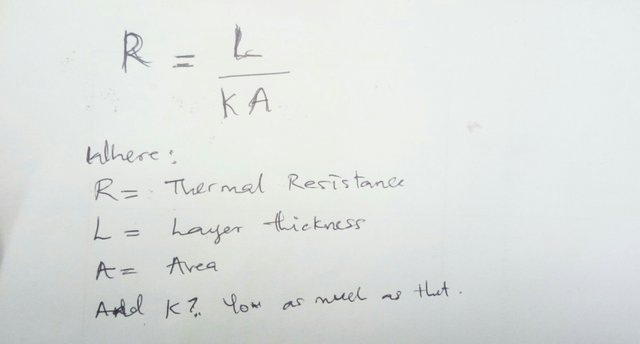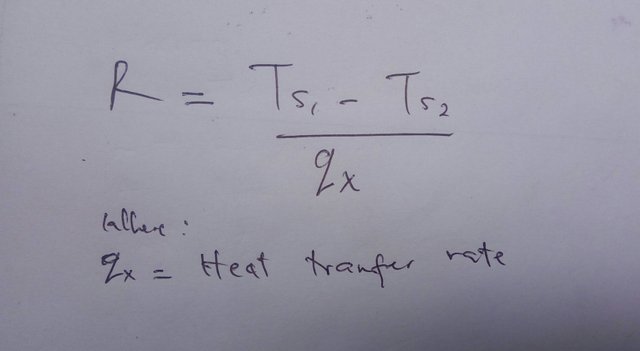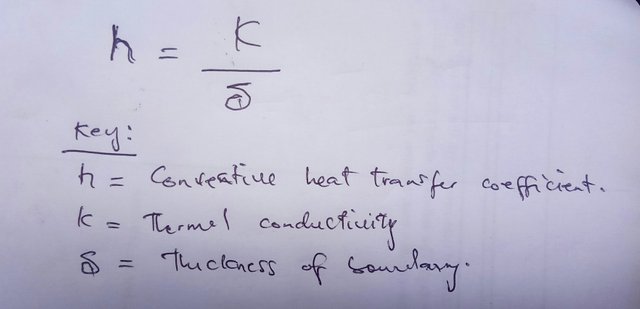Engineering Slut || How Thermal Equations can solve heat related problems in your home
You know what? No one is interested in how much effort you are putting just to deny this, in a nutshell, heat transfer is everywhere. So whether you are heating up in the winter and just trying to cool down during the summer, heat transfer takes places everywhere. In some ways, the world is literarily built around it.

Source: Pixabay (Public domain - CCO licensed)
Any well-engineered building is designed and made out of materials that help keep the inside of the building at a good temperature, even during bitter blizzards or horrendous heat waves. A furnace or AC will only get you so far – without protecting against heat transfer, you might as well try to air condition your whole neighborhood.
A big part of engineering is using your knowledge of natural processes to keep them from interfering with whatever you are trying to do – or in some cases, take advantage of those processes. So, without a solid understanding of how and why this dude called heat moves the way it does, your designs won’t be very successful, especially, if you have just discovered a tropical island.
So, this tropical island is small, totally deserted and seems like the perfect place to build that vacation home you’ve always dreamed of. The tropical whether is really nice, but it’s also hot very hot. So you will probably want to design your to keep the heat out, and cold in. In another word, you will want to prevent as much heat transfer as possible. Even though heat isn’t fluid itself, heat transfers in a way that is kind of similar to fluid movement we already know about (as engineers).
When fluids move, there is always a driving force behind them – specifically, a difference in either pressure or velocity. With heat transfer, the driving force is a difference in temperature. In fact, if you don’t have a temperature difference, you can’t have a heat transfer. Period!
If you have two boxes right next to each other, and they are both at the same temperature, then one of the boxes will not randomly start giving its heat energy away to the other one. But if you are reading this post on your laptop and it is, well, on top of your lap, then your legs might be warming up as heat is transferred to them from your laptop. That is because right now, your laptop is warmer than your skin, and when heat passively transfers, it always moves from a higher temperature to a lower one.
You would have to use the cycle and work energy – basically, an engine to make it move in the opposite direction. And unless you have a perfect insulation, which is practically impossible in most settings, then a temperature difference will cause heat transfer.
So this house you are building is going to heat up from the warm tropical island, no matter what. But there is a lot you can do to slow down the process. There are three main types of heat transfer. These are conduction, convection and radiation. With conduction, heat energy is transferred by the collisions of molecules or other particles.
When two things touch, the faster moving molecules of the warmer object crash into the slower moving molecules of the colder object, transferring energy that heats them up. In your house, that is called heat transfer through the layers of the walls. As the outer layer warms up, conduction would transfer the heat through to the cooler inner layers. To slow this down as per material that has low thermal conductivity – something that does not transfer heat well.
Copper, for example, has a high thermal conductivity, so if you made your walls out of it, you would effectively be making a giant sauna. Which doesn’t sound like a great place to live. For one thing, it would probably be a burn hazard. Materials like brick and drywall on the other hand, have lower thermal conductivities. So, they would be much better choices.
Anything that is sold as insulation also has a very low thermal conductivity, so you will probably want some layers of that too. The thicker these layers, the more resistant the walls will be to heat transfer by conduction. Specifically, they will have more of what is called thermal resistance, which is defined as the thickness of the layer material, divided by the material’s thermal conductivity and the area of the layer. See below.

All that this means is that materials with a lower thermal conductivity have a higher thermal resistance and that a thicker layer will also have a higher thermal resistance. But if there is more area for heat to be conducted through, that will lower the thermal resistance. See below.

Thermal resistance is also equal to the temperature difference divided by the heat transfer rate. Which also makes sense. It means for a given temperature difference, materials with a higher heat transfer rate will have a lower thermal resistance, and vice versa. You can use this equation to determine the level of resistance you will need if you want a low rate of heat transfer for the temperature difference you would expect to have in the layers of your walls. And the resistance of the different layers adds up, so the total amount of the walls is equal to the resistance of each layer combined.

It is like putting on layers of clothing on a cold day. The more layers you have, the lower your rate of heat loss will be, and the easier it is to stay warm. So, for your house, if the drywall and brick don’t have enough thermal resistance to keep the inside cool, you can add layers of insulation to up the resistance. That takes care of the heat transfer within the walls but there is more going on outside of them. This brings us to the second method of heat transfer - Convection.
Convection
The heat of energy by the physical movement of a fluid - which in engineering, can be a liquid or gas. As a fluid moves against or across surface, it can add or take away heat. For example, as air heats up, its particles spreads out, lowering its density. That warmer air rises, taking heat energy with it, and is replaced by cooler, denser air. That is called natural convection, because variation in the temperature of the fluid creates natural movement without any external force.
There is also forced convection, where something external like a fan or the wind moves the fluid. Heat transfer by convection actually involves some conduction, especially at first. When the warm outside the air comes into contact with your house’s walls, it creates the no-slip condition you have probably heard about before, where the layer touching the surface comes to a stop.
Right on top of that, there is what is called a boundary layer, where the air is moving, but slowly. The lower velocity slows down the rate of heat transfer, creating a thermal boundary layer where there is more conduction between the particles, and less convection. Beyond the boundary layer though, heat transfer mostly happens by convection through the fast-moving air.
Convective heat transfer coefficient
You can measure how much heat is being transferred by convection using what is known as the convective heat transfer coefficient, represented by the letter h. It is proportional to the thermal conductivity of the fluid over the thickness of the boundary layer, which just means that thinner fluids with higher thermal conductivity will transfer more heat.
H also depends on how fast a fluid is moving. The less a gas moves around, the less heat is transferred through convection. That is why windows often have double panes. The air trapped between the layers of glass can’t move very much, reducing the heat transfer. So, double paned windows are probably a good idea for your house.

There is no much else you can do to minimise the effect of convection, since you can’t really control what the air does as it moves around our sides. You can’t reduce the effect of the loss of heat transfer, radiation.
Radiation
Radiation is the transfer of energy in the form of electromagnetic waves – and in this context, we are talking about any electromagnetic waves, not just the cancer-causing kind. We see these radiations every time we woke up and head straight into the sun or warm up by fire.
Under conduction and convection, radiation can happen without any contact between the heat source and the object. That is why heat energy from the sun is able to reach the earth. Reflective coating scan help reduce heat transfer from radiation a little, since they absorb fewer electromagnetic waves. But when it comes to radiation, where your house is will be much more important than what it is made of.
Conclusion
Since the sun will likely be the biggest radiation source, you would want to put the house somewhere where it won’t get too much direct sunlight. So, there are lots of factors to consider when you are trying to minimise heat transfer. But with a shady spot, walls with lots of thermal resistance and some double paned windows, you should have a perfectly comfortable place to hang out on your tropical island.
Congratulations @kafilat! You have completed the following achievement on Steemit and have been rewarded with new badge(s) :
Click on the badge to view your Board of Honor.
If you no longer want to receive notifications, reply to this comment with the word
STOPThis post has been voted on by the steemstem curation team and voting trail.
There is more to SteemSTEM than just writing posts, check here for some more tips on being a community member. You can also join our discord here to get to know the rest of the community!
Hi @kafilat!
Your post was upvoted by utopian.io in cooperation with steemstem - supporting knowledge, innovation and technological advancement on the Steem Blockchain.
Contribute to Open Source with utopian.io
Learn how to contribute on our website and join the new open source economy.
Want to chat? Join the Utopian Community on Discord https://discord.gg/h52nFrV
Really nice and interesting article you've got here.
Congratulations @kafilat! You have completed the following achievement on the Steem blockchain and have been rewarded with new badge(s) :
Click on the badge to view your Board of Honor.
If you no longer want to receive notifications, reply to this comment with the word
STOPDo not miss the last post from @steemitboard: